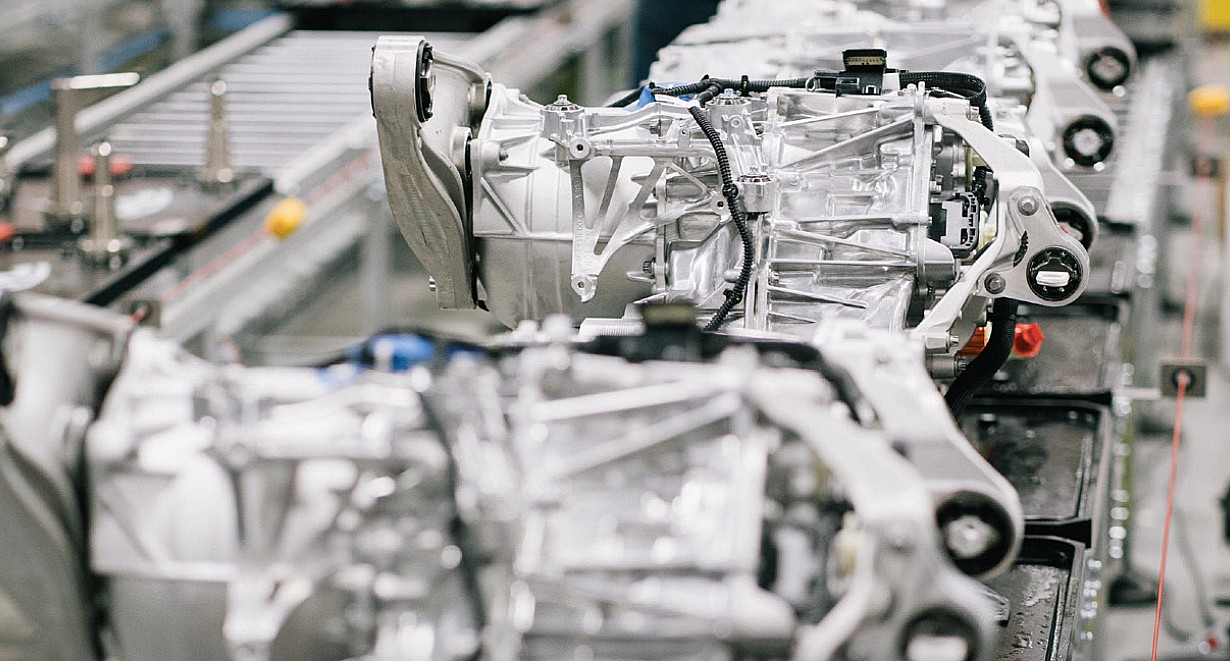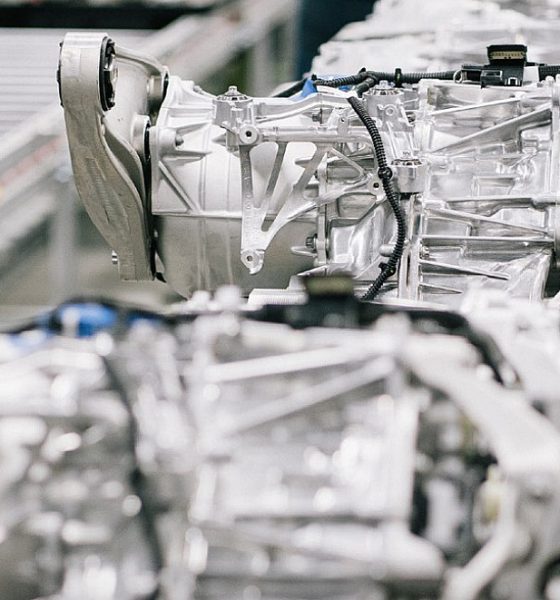

News
The case for Tesla to operate multiple car factories in the US has never been stronger
The recent controversial events surrounding Tesla and its main electric vehicle production plant in Fremont, CA, is one that will likely have repercussions on the company’s future. But beyond the controversy, the recent events surrounding Fremont highlight one key point: it is in Tesla’s best interests to ensure that its vehicle production facilities will no longer be exclusive to one state.
The Fremont factory and Alameda County’s insistence on keeping it closed has resulted in Tesla filing a case against the county. So far, the mayor of the City of Fremont and the City Palo Alto have sided with Tesla, and Elon Musk has remarked that the company’s HQ and future projects will be relocated to other sites, such as Gigafactory Nevada and a Texas site. In the midst of this all is a County Public Health Officer who has reportedly ignored Tesla’s efforts at proposing a reopening plan for the Fremont factory.
What is pretty ironic is the fact that among the carmakers currently operating a production facility in the United States, Tesla is arguably the most experienced in dealing with the COVID-19 pandemic. The electric car maker has successfully dealt with the virus in Shanghai, and following a government-mandated shutdown, Tesla was able to return to regular operations gradually. Once reopened, Gigafactory Shanghai adopted a series of serious anti-coronavirus strategies that helped the company’s workers stay safe despite the pandemic. Tesla intends to do the same in Fremont, if not more.
For now, reopening the Fremont factory will likely be the result of pressure on the county or a serious stroke of fortune that would allow Tesla and the County Public Health Officer eye-to-eye. Each of these requires more than its own stroke of luck, but it doesn’t necessarily have to be. That is, if Tesla has multiple electric vehicle production facilities in the United States. If Tesla has another factory in the US located in an area that is more supportive of the company, it would not have to go through legal means to reopen its primary production facility.
Tesla’s next facility will likely be located in Texas, and so far, Sen. Ted Cruz has stated on Twitter that the state is fully behind the electric car maker. Texas actually makes sense for Tesla, especially considering that SpaceX, Musk’s private space venture, already has a facility in Boca Chica. If speculations prove right, Tesla can very well be building its first Terafactory in the state, which will be making the Cybertruck, and perhaps other vehicles like Model Y and Semi as well.
Tesla is now at a point where it is producing vehicles that are not intended for a small demographic of car buyers. With the advent of the Model 3 and the Model Y, as well as the upcoming Cybertruck, Tesla is taking on the mainstream market, an industry that counts its production numbers in the hundreds of thousands. This means that the company is now poised to meet the juggernauts of the auto industry like General Motors and Volkswagen head-on, provided that it has the resources to do so. It just has to make sure that its vehicle production activities could not be stopped just because of a single factory shutdown.
With this in mind, it may be a good idea for Tesla to expand its vehicle production capabilities far beyond the Texas Gigafactory/Terafactory. Tesla’s vehicle lineup does not end with the Cybertruck, the Roadster, and the Semi, after all. References to a Tesla van have been stated before, and Tesla has also hinted at a vehicle that’s smaller and more affordable than the Model 3. The more successful Tesla gets, and the more advanced the company’s Full Self-Driving suite becomes, the healthier the demand for Tesla’s vehicles will be. To accomplish this, it may be a good idea to look at legacy auto’s playbook for once, and start establishing car factories across the United States.

News
Elon Musk’s Grokipedia surges to 5.6M articles, almost 79% of English Wikipedia
The explosive growth marks a major milestone for the AI-powered online encyclopedia, which was launched by Elon Musk’s xAI just months ago.

Elon Musk’s Grokipedia has grown to an impressive 5,615,201 articles as of today, closing in on 79% of the English Wikipedia’s current total of 7,119,376 articles.
The explosive growth marks a major milestone for the AI-powered online encyclopedia, which was launched by Elon Musk’s xAI just months ago. Needless to say, it would only be a matter of time before Grokipedia exceeds English Wikipedia in sheer volume.
Grokipedia’s rapid growth
xAI’s vision for Grokipedia emphasizes neutrality, while Grok’s reasoning capabilities allow for fast drafting and fact-checking. When Elon Musk announced the initiative in late September 2025, he noted that Grokipedia would be an improvement to Wikipedia because it would be designed to avoid bias.
At the time, Musk noted that Grokipedia “is a necessary step towards the xAI goal of understanding the Universe.”
Grokipedia was launched in late October, and while xAI was careful to list it only as Version 0.1 at the time, the online encyclopedia immediately earned praise. Wikipedia co-founder Larry Sanger highlighted the project’s innovative approach, noting how it leverages AI to fill knowledge gaps and enable rapid updates. Netizens also observed how Grokipedia tends to present articles in a more objective manner compared to Wikipedia, which is edited by humans.
Elon Musk’s ambitious plans
With 5,615,201 total articles, Grokipedia has now grown to almost 79% of English Wikipedia’s article base. This is incredibly quick, though Grokipedia remains text-only for now. xAI, for its part, has now updated the online encyclopedia’s iteration to v0.2.
Elon Musk has shared bold ideas for Grokipedia, including sending a record of the entire knowledge base to space as part of xAI’s mission to preserve and expand human understanding. At some point, Musk stated that Grokipedia will be renamed to Encyclopedia Galactica, and it will be sent to the cosmos.
“When Grokipedia is good enough (long way to go), we will change the name to Encyclopedia Galactica. It will be an open source distillation of all knowledge, including audio, images and video. Join xAI to help build the sci-fi version of the Library of Alexandria!” Musk wrote, adding in a later post that “Copies will be etched in stone and sent to the Moon, Mars and beyond. This time, it will not be lost.”
News
Tesla Model 3 becomes Netherlands’ best-selling used EV in 2025
More than one in ten second-hand electric cars sold in the country last year was a Tesla Model 3.

The Tesla Model 3 became the most popular used electric car in the Netherlands in 2025, cementing its dominance well beyond the country’s new-car market.
After years at the top of Dutch EV sales charts, the Model 3 now leads the country’s second-hand EV market by a wide margin, as record used-car purchases pushed electric vehicles further into the mainstream.
Model 3 takes a commanding lead
The Netherlands recorded more than 2.1 million used car sales last year, the highest level on record. Of those, roughly 4.8%, or about 102,000 vehicles, were electric. Within that growing segment, the Tesla Model 3 stood far ahead of its competitors.
In 2025 alone, 11,338 used Model 3s changed hands, giving the car an 11.1% share of the country’s entire used EV market. That means more than one in ten second-hand electric cars sold in the country last year was a Tesla Model 3, Auto Week Netherlands reported. The scale of its lead is striking: the gap between the Model 3 and the second-place finisher, the Volkswagen ID3, is more than 6,700 vehicles.
Rivals trail as residual values shape rankings
The Volkswagen ID.3 ranked a distant second, with 4,595 used units sold and a 4.5% market share. Close behind was the Audi e-tron, which placed third with 4,236 registrations. As noted by Auto Week Netherlands, relatively low residual values likely boosted the e-tron’s appeal in the used market, despite its higher original price.
Other strong performers included the Kia Niro, the Tesla Model Y, and the Hyundai Kona, highlighting continued demand for compact and midsize electric vehicles with proven range and reliability. No other model, however, came close to matching the Model 3’s scale or market presence.
News
Tesla Model Y Standard Long Range RWD launches in Europe
The update was announced by Tesla Europe & Middle East in a post on its official social media account on X.

Tesla has expanded the Model Y lineup in Europe with the introduction of the Standard Long Range RWD variant, which offers an impressive 657 km of WLTP range.
The update was announced by Tesla Europe & Middle East in a post on its official social media account on X.
Model Y Standard Long Range RWD Details
Tesla Europe & Middle East highlighted some of the Model Y Standard Long Range RWD’s most notable specs, from its 657 km of WLTP range to its 2,118 liters of cargo volume. More importantly, Tesla also noted that the newly released variant only consumes 12.7 kWh per 100 km, making it the most efficient Model Y to date.
The Model Y Standard provides a lower entry point for consumers who wish to enter the Tesla ecosystem at the lowest possible price. While the Model 3 Standard is still more affordable, some consumers might prefer the Model Y Standard due to its larger size and crossover form factor. The fact that the Model Y Standard is equipped with Tesla’s AI4 computer also makes it ready for FSD’s eventual rollout to the region.
Top Gear’s Model Y Standard review
Top Gear‘s recent review of the Tesla Model Y Standard highlighted some of the vehicle’s most notable features, such as its impressive real-world range, stellar infotainment system, and spacious interior. As per the publication, the Model Y Standard still retains a lot of what makes Tesla’s vehicles well-rounded, even if it’s been equipped with a simplified interior.
Top Gear compared the Model Y Standard to its rivals in the same segment. “The introduction of the Standard trim brings the Model Y in line with the entry price of most of its closest competition. In fact, it’s actually cheaper than a Peugeot e-3008 and costs £5k less than an entry-level Audi Q4 e-tron. It also makes the Ford Mustang Mach-E look a little short with its higher entry price and worse range,” the publication wrote.








